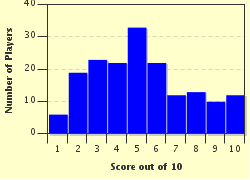Quiz Answer Key and Fun Facts
1. When in Rome, you want to visit all the seven hills on which the city centre was built. Which of the following is *NOT* a Roman hill?
2. When in Rome, you should visit the Vatican - even if you're not a Christian. The Vatican houses impressive paintings, such as the fresco "The Last Judgment" on one of the walls of the Sistine Chapel. When Michelangelo had finished the aforesaid painting, some of the Roman clergy were appalled by the nudity of each and every person depicted. So Pope Pius IV ordered a contemporary artist to cover the too explicit parts. Who obeyed Pius IV, and is currently known under the nickname "Il Braghettone" ("The Breeches Maker") because of his repainting of Michelangelo's "Last Judgment"?
3. When in Rome, you find Bernini's fountains and statues almost everywhere. Which of the following fountains was *NOT* produced by Bernini?
4. Rome was built (according to legend) in 753 BC, on April 21st. Many constructions from the early ages have perished, but some are still (almost) intact. Of the following choices, which construction is the oldest?
5. When in Rome, you're surrounded by Roman Catholic churches. But are there any places of worship for protestant denominations, for Jews or for Muslims?
6. When in Rome, you may get the impression that every noteworthy construction dates from antiquity or the Renaissance/Baroque period. However, this is not the case. Which of the following monuments was built between 1885 and 1925?
7. When in Rome, you may want to visit some museums. Which of the following museums is *NOT* in Rome?
8. When in Rome, you might want to have a look at the finish line of the Olympic Marathon (won in 1960 by Abebe Bikila). Where do you go for this sportive place?
9. When in Rome, you can use several methods of transport from one attraction to the other. Which of these forms of transportation is *NOT* available in Rome?
10. When in Rome, you might want to declare everlasting love to your partner. A trendy way to do so is to affix a padlock on the Milvian Bridge (a recent tradition that has spread to other bridges all over the world). Which Italian author has described this tradition in his book "Ho voglia di te" (translated as "I Want You")?
Source: Author
JanIQ
This quiz was reviewed by FunTrivia editor
stedman before going online.
Any errors found in FunTrivia content are routinely corrected through our feedback system.


